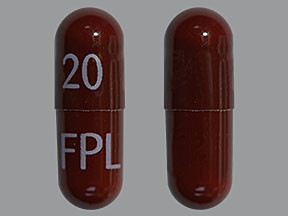PIROXICAM - ORAL
PHONETIC PRONUNCIATION: (pir-OX-i-kam)
COMMON BRAND NAME(S): Feldene
GENERIC NAME(S): piroxicam
Uses
USES: Piroxicam is used to reduce pain, swelling, and joint stiffness from arthritis. Reducing these symptoms helps you do more of your normal daily activities. This medication is known as a nonsteroidal anti-inflammatory drug (NSAID). It works by blocking your body's production of certain natural substances that cause inflammation. If you are treating a chronic condition such as arthritis, ask your doctor about non-drug treatments and/or using other medications to treat your pain. See also Warning section.
How to use PIROXICAM - ORAL
HOW TO USE: Read the Medication Guide provided by your pharmacist before you start using piroxicam and each time you get a refill. If you have any questions, ask your doctor or pharmacist. Take this medication by mouth as directed by your doctor, usually once daily with a full glass of water (8 ounces/240 milliliters). Do not lie down for at least 10 minutes after taking this drug. To prevent stomach upset, take this medication with food, milk, or an antacid. The dosage is based on your medical condition and response to treatment. To reduce your risk of stomach bleeding and other side effects, take this medication at the lowest effective dose for the shortest possible time. Do not increase your dose, take it more often, or take it for a longer time than prescribed. If you are taking this drug "as needed" (not on a regular schedule), remember that pain medications work best if they are used as the first signs of pain occur. If you wait until the pain has worsened, the medication may not work as well. It may take several weeks of taking this drug regularly until you get the full benefit. Tell your doctor if your condition does not improve or if it worsens.
Side Effects
Precautions
Interactions
Overdose
Images
Reviews
Faq for PIROXICAM - ORAL
Piroxicam - Oral is a nonsteroidal anti-inflammatory drug (NSAID) used to relieve pain, inflammation, and swelling caused by conditions such as arthritis, osteoarthritis, and rheumatoid arthritis.
Piroxicam - Oral is typically taken once daily with a full glass of water. It is important to take it exactly as prescribed by your doctor and follow the dosage instructions on the label.
Common side effects may include stomach upset, nausea, vomiting, diarrhea, dizziness, and headache. If these side effects persist or worsen, it is recommended to consult your doctor.
Certain medications may interact with Piroxicam - Oral, so it is important to inform your doctor about all the medications you are currently taking. NSAIDs may increase the risk of bleeding with blood thinners like warfarin or increase the risk of stomach ulcers when taken with corticosteroids.
It is advised to avoid alcohol consumption while on Piroxicam - Oral as it can increase the risk of stomach bleeding. Inform your doctor if you have a history of heart disease, high blood pressure, stomach ulcers, kidney or liver disease, or if you are pregnant or breastfeeding.
The onset of action for Piroxicam - Oral may vary among individuals. Typically, it starts to work within several hours to a few days. However, it is important to continue taking it regularly as prescribed to experience full benefits.
Piroxicam - Oral is primarily intended for short-term use to relieve acute pain and inflammation. It is usually not recommended for long-term treatment due to an increased risk of side effects, especially stomach and cardiovascular complications.
If you miss a dose, take it as soon as you remember. However, if it is close to the next scheduled dose, skip the missed dose and continue with your regular dosing schedule. Do not double the dose to make up for a missed one.
Piroxicam - Oral is not typically recommended for use in children unless specifically prescribed by a doctor. It should be used with caution in elderly patients as they may be more sensitive to its side effects.
Warning
WARNING: Nonsteroidal anti-inflammatory drugs (including piroxicam) may rarely increase the risk for a heart attack or stroke. This effect can happen at any time while taking this drug but is more likely if you take it for a long time. The risk may be greater if you have heart disease or increased risk for heart disease (for example, due to smoking, family history of heart disease, or conditions such as high blood pressure or diabetes). Do not take this drug right before or after heart bypass surgery (CABG). This drug may rarely cause serious (rarely fatal) bleeding from the stomach or intestines. This effect can occur without warning at any time while taking this drug. Older adults may be at higher risk for this effect. Stop taking piroxicam and get medical help right away if you notice any of these rare but serious side effects: black/tarry stools, persistent stomach/abdominal pain, vomit that looks like coffee grounds, chest/jaw/left arm pain, shortness of breath, unusual sweating, confusion, weakness on one side of the body, slurred speech, sudden vision changes. Talk to your doctor or pharmacist about the benefits and risks of taking this drug.
Disclaimer
IMPORTANT: HOW TO USE THIS INFORMATION: This is a summary and does NOT have all possible information about this product. This information does not assure that this product is safe, effective, or appropriate for you. This information is not individual medical advice and does not substitute for the advice of your health care professional. Always ask your health care professional for complete information about this product and your specific health needs.

No Reviews Yet